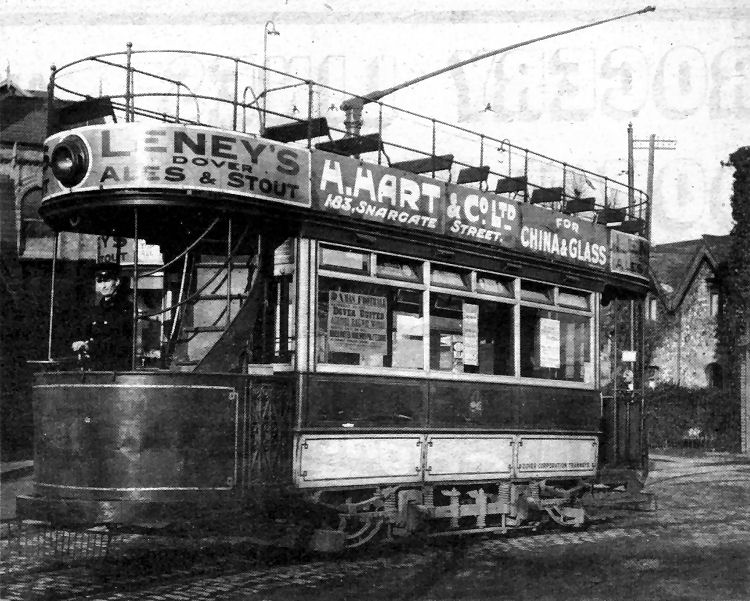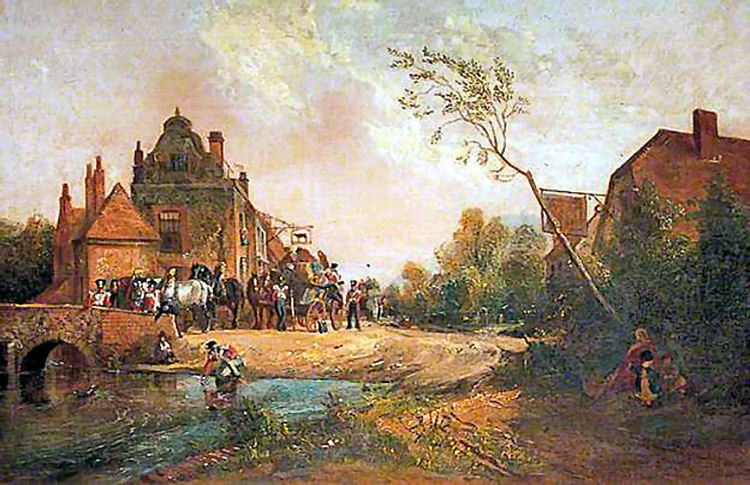Page Updated:- Sunday, 07 March, 2021. |
|||||
 Published in the Dover Express, 10 April, 1981. A PERAMBULATION OF THE TOWN, PORT AND FORTRESS. PART 172.
MAJOR FIRE In 1906, on 10th July, came another major fire and Buckland Mill was once again destroyed only to be rebuilt, together with a dining room and recreation hall adjacent to the mill which were presented to the workers in recognition of the efforts of the women employees who formed a fire-fighting team, using a chain of buckets, in an attempt to put out the fire.
CONQUEROR MILL In 1910 Wiggins Teape and Company Ltd., acquired an adjoining property to build a new plant known as the Conqueror Mill. This was erected by a local builder at a cost of £12,479. Construction began in July 1910 and was finished in time for the new No. 3 machine to go into production the following year, pushing up output of the Buckland mills to up to 70 tons a week. The property purchased as well as the land included a building known as Buckland House, which was erected in 1823 by Thomas Horne. The Crabble mills, a short distance up the river, were also acquired by Wiggins Teape and worked in conjunction with the three paper-making machines at Buckland. In 19C6 the workforce at the mills numbered 300. In the old days paper-making was nearly all done by hand, but this gave way gradually to machinery which greatly increased production. Seventy years ago the powerful steam engines employed in addition to water power, consumed 190 tons of coal a week. Electrification of the mill did not take place until 1936 when a steam turbo-generator was installed to replace the old steam engines. Between the two world wars modernisation was carried out. One of the paper-making machines was rebuilt, humidifiers were fitted to mature the paper and other improvements made to update the mill plant.
WAR DAMAGE Then came the war and, after a Royal Air Force fighter aircraft crashed an the roof over one of toe paper-making machines, in August 1940, causing considerable damage it was decided to close down production at Dover until after the war. Strangely, although the town continued to suffer shelling and bomb damage for a long time afterwards, there was no further damage to the mill itself, Crabble Mill, however, was not so lucky. In a shelling attack in March 1944 the mill was badly hit. Buckland Mill began working again in 1945 but the Crabble mill was to be used only as a store. By 1952 weekly production reached 150 tons — or 5,000,000 sheets of paper of an average size of 30 inches by 25 inches and the workforce had grown to 400. Many improvements have continued to be made ever since including the replacement in 1956 of the six hand-fired Lancashire boilers by more modem plant, an extension of the laboratory, improved facilities for the workers and the construction of a modern office block. About 25 years' ago it also became necessary to obtain electricity from outside the mill for the first time. Demands of production were such that the mill’s own plant was unable to generate all the power required.
TRACING THE BOUNDARY In the Vestry Minutes Book of St Andrew’s Church, Buckland, there is an interesting account by the vicar of the old ceremony of beating the bounds of the parish In March 1880 when a party of young and old traced the then boundaries of Buckland. “The party started from the boundary nearly opposite to the Cricket Field (comer of Beaconsfield Road and London Road) and went over the hills above the Union (in Coombe Valley Road) towards Diggle’s Folly.“ (Mr Joseph Diggle had a project for exploiting Elms Vale in 1860, a plan which was then regarded as merely visionary. He built a high tower on the top of Whinless Down, known as Diggle’s Folly, which disappeared some time after the photograph printed in Part 165, was taken, about 100 years ago). "We then went on by Poulton towards St Radigund’s Abbey and down Gorse Hill to the Three Cups where & halt was made at 2 pm for lunch. At 2.20 pm a second start was made, and, passing over Crabble Hill, the party skirted Old Park and searched out the bounds (boundary line) lying through Bamtie Shaw (a shaw was a thicket or wood) and near to Frith’s Farm. Then, entering the old Roman Road (Chalky Lane) descended In a direct line to Charlton Church where, crossing the River Dour on a raft, they joined the starting boundary in the High Road at about 5 pm. In the evening the company dined together in the Infants’ School room.“
UPPER BUCKLAND In Upper Buckland, between Messrs Mannering’s former corn mill and the bridge, there are several points of historical interest. The finest residence on the road was for many years Lundy House, near the mill, built by Mr William Kingsford the elder, as his residence, about the year 1820. It was later occupied by another Dover miller Mr Edward Mannering. The property was built with extensive cellars and was topped by a flagstaff. Mr Mannering annually gave a magnificent firework display on November 5th to mark his son Guy’s birthday. Above the house were cottages built originally for paper-makers, about 170 years ago. Near these is an ancient public house called the Old Endeavour. The prefix “Old“ is intended to distinguish it from the New Endeavour which opened later a little higher up. The name of this old inn was suggested by a privateer, called “The Endeavour,“ fitted out at Dover in July, 1746 (Thomas Kennett, master), the men and officers of which all shared alike in the perils and the prizes of the adventure.

An open-top Dover tram at Buckland Bridge 60 years ago. It Is possible to date the picture exactly thanks to the football poster in the front of the tramcar which advertised one of the regular ties between Dover Football Club and Ashford Railway Works on Christmas Eve. By checking the Dover Express files It was found that this match was in 1921. Driver of the tram is Percy Pilcher. On the right are flint cottages which stood next to the tram shed. The picture was let to us by Mr Joe Harman a former tramway conductor and ambulance driver. It was printed from an old glass negative — one of a remarkable series of pictures taken by the late Mr George Archer, of Alkham, himself a tramway worker from 1919-26. A collection of about 200 glass negatives was found, after his death in 1958, In a cupboard in his garden shed. A selection of them was printed in the Dover Gazette of March' 18.

The picture above, by way of contrast, Is of Buckland Bridge and the Bull Inn, the old posting house, in about 1850.
|
|||||
|
If anyone should have any a better picture than any on this page, or think I should add one they have, please email me at the following address:-
|
|||||
| LAST PAGE |
|
MENU PAGE |
|
NEXT PAGE | |